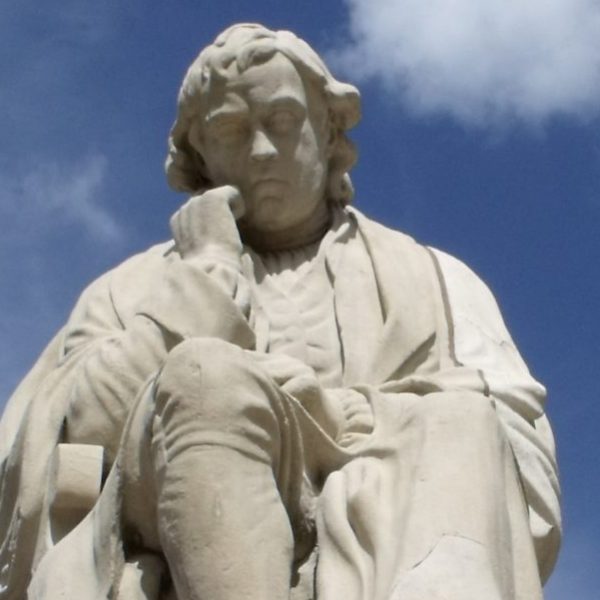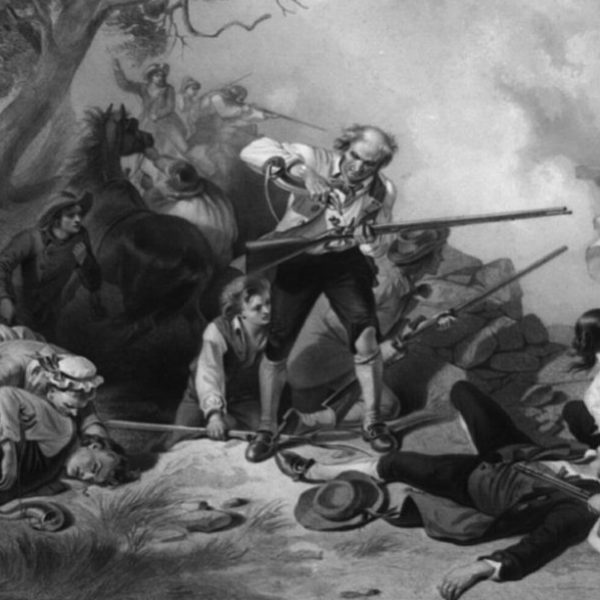A New Tour of Georgian London’s Fleet Street Shows Its Mixed Race American Side
 Julie Flavell, author of When London Was Capital of America and Fellow of the Royal Historical Society, takes you on a unique walk of Georgian London in the days when southern American visitors were bringing a mixed race look to the neighborhood.
Julie Flavell, author of When London Was Capital of America and Fellow of the Royal Historical Society, takes you on a unique walk of Georgian London in the days when southern American visitors were bringing a mixed race look to the neighborhood.
“What Dr Johnson Knew”
Julie Flavell—
“How is it,” wrote Dr Johnson in 1775, “that we hear the loudest yelps for liberty among the drivers of Negroes?” Georgian London’s famous author was outraged to see American colonists demanding their freedom while denying it to their slaves. A year before the Declaration of Independence, he pronounced the American rebellion a sham.
But where, exactly, did he see these hypocritical American rebels while living and writing from his home near Fleet Street? Johnson scholars have guessed that he picked up knowledge of Britain’s slave colonies from plays and newspapers. In fact some of Dr Johnson’s best friends were slave owners, and there were many slaves living in and around Georgian Fleet Street. A new historical walk from the Temple to Lincoln’s Inn recreates the mixed race look of the district as Dr Johnson knew it in the eighteenth century.
 To walk it, begin at the George, a pub in the Strand where Dr Johnson occasionally stopped for a drink. Duck into Devereux Court, the narrow passageway just beside it that takes you directly into the warren of ancient buildings that make up the Inns of Court. A couple of turnings lead to the Devereux, a popular pub for barristers from the nearby Royal Courts. In Dr Johnson’s day it was a coffee house called the Grecian. American icon Benjamin Franklin used to come here to drink with the Learned Club, a convivial spin-off of the Royal Society.
To walk it, begin at the George, a pub in the Strand where Dr Johnson occasionally stopped for a drink. Duck into Devereux Court, the narrow passageway just beside it that takes you directly into the warren of ancient buildings that make up the Inns of Court. A couple of turnings lead to the Devereux, a popular pub for barristers from the nearby Royal Courts. In Dr Johnson’s day it was a coffee house called the Grecian. American icon Benjamin Franklin used to come here to drink with the Learned Club, a convivial spin-off of the Royal Society.
Franklin, who spent seventeen years between 1757 and 1775 in London as spokesman for the colonies, had moved up in the world since he was a bustling Philadelphia printer. Now a colonial gentleman, he brought with him to London his slave Peter. The two Pennsylvanians blended in well in a precinct where wealthy white Americans escorted by slaves were an everyday sight.
Turn left out of the secluded courtyard and enter an open space where broad stone steps descend into Fountain Court, the spacious heart of the Temple. Here stands the famous Middle Temple Hall, a striking Tudor building where Shakespeare produced the first performance of Twelfth Night.
In the eighteenth century, West Indians and Americans from Britain’s New World colonies could be seen coming and going from Middle Temple Hall with their African slaves. Scores of plantation owners came to the Inns of Court to study law, including four signers of the American Declaration of Independence. Many colonists brought slaves with them to save the expense of a London servant.
 One of them was William Franklin, son of the famous Benjamin, who brought his slave King with him when he studied here in 1757. When King ran away, the Franklins discovered him working for a lady in Suffolk. King’s new employer taught him to play the French horn and other skills “more useful in a servant” grumped Ben Franklin, who hoped the troublesome King could be sold to the Englishwoman.
One of them was William Franklin, son of the famous Benjamin, who brought his slave King with him when he studied here in 1757. When King ran away, the Franklins discovered him working for a lady in Suffolk. King’s new employer taught him to play the French horn and other skills “more useful in a servant” grumped Ben Franklin, who hoped the troublesome King could be sold to the Englishwoman.
From Fountain Court, exit into narrow Middle Temple Lane. Turn left and left again and enter Brick Court, where Johnson’s friend, the novelist and playwright Oliver Goldsmith, once lived. Goldsmith loved company, and befriended some of the young Americans in London. He threw legendary parties in his Brick Court rooms. Don’t look for them now; they were obliterated in the Blitz. Tall London plane trees and a parking area occupy the space where Goldsmith once wrote She Stoops to Conquer.
If you explore a little further into Brick Court, you will find traces of a ghostly doorway that marks the entrance to Palgrave Court, one of the many lost alleyways of the Temple. Go to the far right corner of the yard, where an ornate stone entrance to 4 Essex Court sports the lamb that is the emblem of Middle Temple. In the adjoining brick building to the left, where there should be a window, you can detect the outlines of the blocked up entrance.
In 1762 student Ralph Weekes of Barbados lived in Palgrave Court with his slave George Stewart. When George ran away, Ralph was forced to advertise, promising a reward to anyone who would return his “property”. In a country that had no slave codes, George and King were not the only slaves to abscond. Advertisements for the return of runaway slaves were everyday sights in London pubs and newspapers.
Leave Brick Court and re-enter Middle Temple Lane, where on your left you will see a passageway marked “To Lamb Building”. Go in here and pass through the tiny garden of Elm Court. Straight ahead is one of the oldest buildings in the precinct, the fourteenth century Buttery. The steps beside it take you up to an arcade constructed of white arches. Just beyond it is the famous Temple Church. This ancient building was founded in the twelfth century by the Knights Templars, the soldier monks who gave the Temple its name.
 Sunday attendance at Temple Church was mandatory for law students in the eighteenth century. One of them was John Laurens of South Carolina, whose father was a slave trader. When John began his studies in 1774, he befriended English poet and fellow Templar John Day. The two would have seen black and white Americans attending service in Temple Church. Day – as outraged as Dr Johnson by the sight of slaves – wrote, “If there be an object truly ridiculous in nature, it is an American patriot signing resolutions of independency with one hand, and with the other brandishing a whip over his affrighted slaves.” John Laurens returned to America to fight and die for his country’s independence, but Day’s words stuck. The young American risked his reputation promoting an unsuccessful scheme to offer South Carolina slaves freedom in return for military service.
Sunday attendance at Temple Church was mandatory for law students in the eighteenth century. One of them was John Laurens of South Carolina, whose father was a slave trader. When John began his studies in 1774, he befriended English poet and fellow Templar John Day. The two would have seen black and white Americans attending service in Temple Church. Day – as outraged as Dr Johnson by the sight of slaves – wrote, “If there be an object truly ridiculous in nature, it is an American patriot signing resolutions of independency with one hand, and with the other brandishing a whip over his affrighted slaves.” John Laurens returned to America to fight and die for his country’s independence, but Day’s words stuck. The young American risked his reputation promoting an unsuccessful scheme to offer South Carolina slaves freedom in return for military service.
Turn right as you leave Temple Church and walk into Inner Temple Lane. Through its arched gateway is busy Fleet Street, where pubs from Dr Johnson’s day – the Bell Tavern, Ye Olde Cock, and Johnson’s favourite, the Cheshire Cheese – are still serving. In 1764 over fifty black servants held a ball in a Fleet Street pub, dancing and drinking until four in the morning. No whites were allowed.
To visit Dr Johnson’s only remaining London residence, head for the Cheshire Cheese, and duck down narrow Wine Office Court on its left. Follow the signs to Dr Johnson’s House in nearby Gough Square. Now a museum, visitors can explore all four storeys of the early Georgian house.
While Dr Johnson was living here in 1752 Francis Barber, a ten-year-old slave boy, joined his household. Francis belonged to Richard Bathurst, a Middle Templar from Jamaica and one of Dr Johnson’s dearest friends. When Bathurst fell on hard times, Johnson took the lad in, and two years later Francis was set free. Richard Bathurst, like his famous friend, had no stomach for slavery.
 But not everyone in Johnson’s circle objected to slavery. James Boswell, the Doctor’s famous biographer, opposed the anti-slavery movement, and wrote bad poetry on the idyllic lives of West Indian slaves. But Boswell should have known better. The harsh realities of slavery could be seen much closer to home, in the streets and taverns around Fleet Street, and in the homes of Georgian Londoners, many of whom had no scruples about owning slaves.
But not everyone in Johnson’s circle objected to slavery. James Boswell, the Doctor’s famous biographer, opposed the anti-slavery movement, and wrote bad poetry on the idyllic lives of West Indian slaves. But Boswell should have known better. The harsh realities of slavery could be seen much closer to home, in the streets and taverns around Fleet Street, and in the homes of Georgian Londoners, many of whom had no scruples about owning slaves.
If you walk a short distance up Chancery Lane off Fleet Street, you will come to massive Lincoln’s Inn Gatehouse with its Tudor oak doors. In Dr Johnson’s day a fourteen-year-old slave boy was sold from a pub beside this gate. “His price is £25,” ran the advertisement, “and would not be sold but the person he belongs to is leaving off business.” Just through the gate stands the bell tower that inspired poet John Donne to write “For Whom the Bell Tolls”. Walk through the quiet precinct of Lincoln’s Inn into green and peaceful Lincoln’s Inn Fields, since the 1630s London’s largest public square.
Copyright © 2011 by Julie Flavell.
 Julie Flavell is the author of When London Was Capital of America, now out in paperback. You can visit the author’s website at www.julieflavell.com.
Julie Flavell is the author of When London Was Capital of America, now out in paperback. You can visit the author’s website at www.julieflavell.com.




This is awesome, really for my young American raised British daughters it is a treasure to behold. We will walk and let you know how we fared. If you want to join us, and guide us, we would be delighted! Nada and the girls from America…
Dear Nada, I just saw your comment today, I do hope you and your children enjoyed the tour!